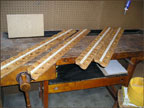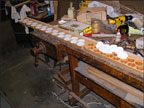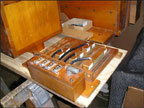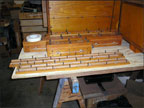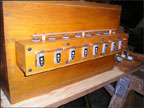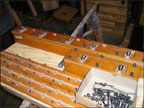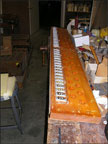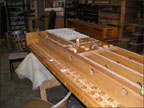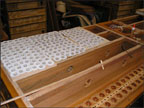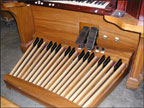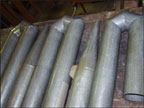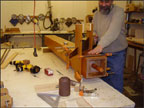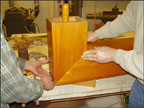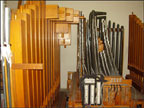
Patrick Allen Aeolian Skinner Organ - Factory Work Begins, January 2004
Click a thumbnail to see a larger image.
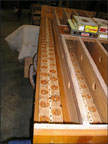
As each pouch board is cleaned off, it is taken back to the windchest and put there for safekeeping.
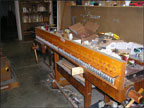
The Swell primary action has the new magnets installed, and the pouches have been glued on; now the valves are being re-installed.
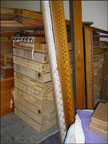
The Great primary pouches are glued in place, and the unit is ready to be assembled after the Swell primary is complete.
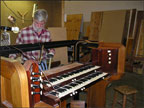
As the releathering of the windchest parts went on, Steve Algire began the work of restoring the console. First he had to vacuum out years of dust.
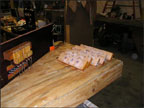
Then he began the releathering of all the pneumatics that moved the stopknobs and coupler tabs, as well as the switches for the couplers.
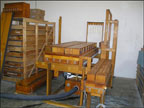
When all the releathering work was complete, the organ was set up exactly as it was in the practice room, and it was tested to be sure everything worked.
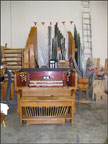
Then all the pipes were placed on the windchests, and it was adjusted and tuned. The red Tís on the wall are tape to hold the plastic sheeting that covered the organ when it was not being worked on, to protect it from dust.
It was during this time that Patrick Allen got to come to the factory and play the organ. We enjoyed hearing it, but we believe he enjoyed playing it more. This was the first time the organ had been played in years, as the console had been disconnected when the practice room had been made into an office.
After this we turned our attention to modifying the organ to fit it to the room it would live in. We had to reduce the height and the width. Reducing the width was done by rearranging the parts, moving the offset chests to new locations. Reducing the height meant we had to miter pipes to fit the lower ceiling.
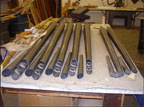
Here Steve Algire has carefully measured the Pedal 8í SpitzPrincipal zinc pipes, and cut them into sections. The two on the right have been soldered together, with the full 180 degree miter.
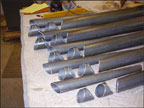
The sections of each pipe are carefully marked when they are cut, and the edges are cleaned down to accept the solder.
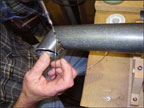
Each section is tacked with solder to hold it in place, and then rotated in a special holder, to securely solder the joint all the way around.
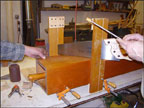
The Pedal Bourdon pipes were thicker than our cutoff saw could open, so we had to invent a guillotine stand to hold the pipes and cut them by hand.
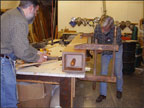
For the larger pipes, two men were required. Here Richard Alford is on the left and Steve Algire on the right.
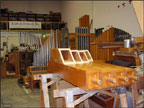
The pipes are waiting to be glued back together. Note that the metal pipes have all been reinstalled after they were mitered, and the organ is now longer as it becomes less wide. The red Tís on the wall mark how tall it was before, and a blue line marks the new ceiling height.
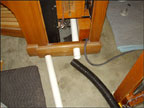
One of the final operations was installing a piece of PVC tubing from the console regulator through the baseboard on the right side. This is where the flex line from the blower will attach. The gray cable between the console and the organ ran through a small mouse hole in the side panel.
The organ was again tested, adjusted and tuned, and pronounced ready to install. We all regretted seeing it go, as we had enjoyed playing it here in the factory, but we looked forward to seeing and playing it when it was installed.


